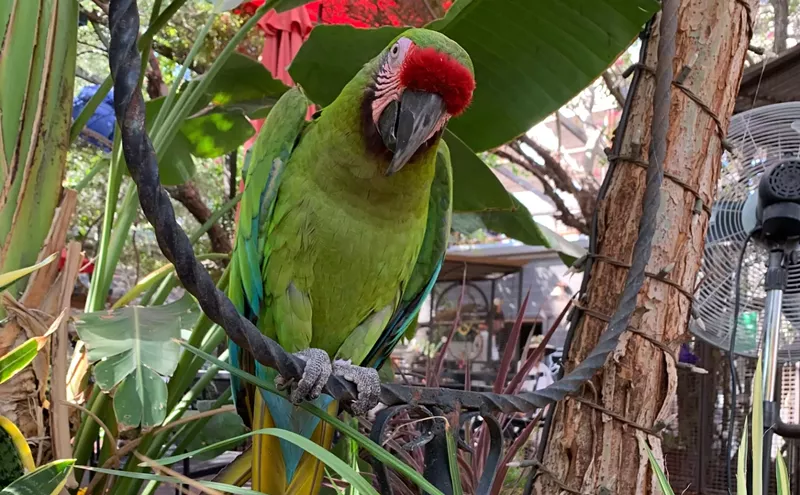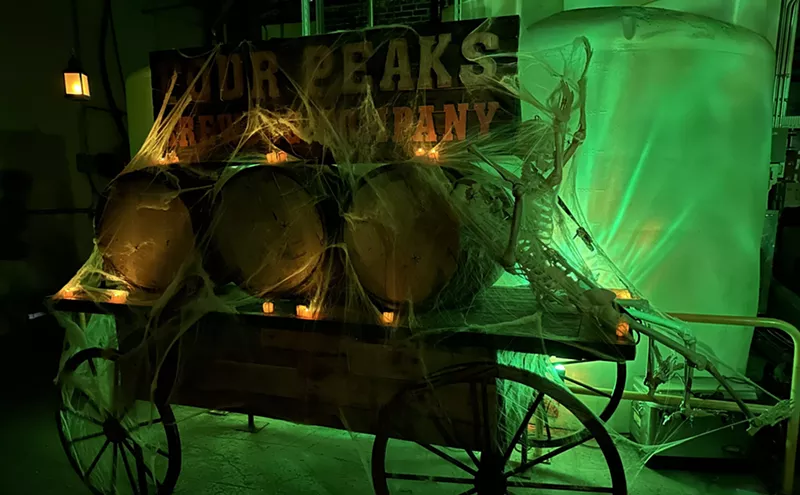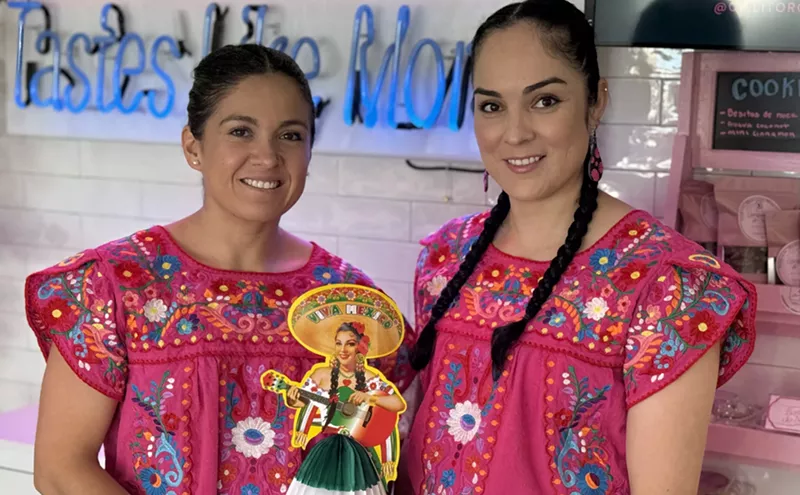We're going behind the scenes and getting up close and personal with some of the Valley's favorite chefs, learning what it takes to make one of their best-known dishes. Welcome to The Trail.
It's finally December and temperatures have finally started to dip. At Crudo that means it's just about time to reveal a new fall menu.
The next time you dine at chef Cullen Campbell's central Phoenix restaurant you might notice that the short rib has been replaced with a beef cheek entrée. It's just one example of how Campbell incorporates increasingly unexpected ingredients in the restaurant's always-innovative menu. Earlier this year, Crudo also introduced a whole roasted pig head dinner for two.
See also: Tracy Dempsey of Tracy Dempsey Originals Makes Original Bacon Pecan Brittle
Offering offal wasn't something Campbell necessarily set out to do but he can definitely trace back to where the trend began.
"It all started with this," Campbell says, holding a small bowl of crispy porcine snacks.
Chances are good that if you've been to Crudo, you've at least seen the bar snack or side for which the chef has become famous (at least locally). These days Campbell says just about every table gets an order, sometimes two.
The dish, simply called Crispy Pig Ears, consists of a pile of fried pig's ears sliced into strips and served in a Fresno chile sauce. Campbell introduced it about six months after opening the restaurant. It was supposed to be a fun bar snack to appeal to his industry friends who frequented the spot.
It started with one 10-pound case of pig ears -- which, by the way, the chef had to special order from his supplier because, well, no one else wanted them.
He sold through that ten pounds in two days.
Now, two years later, Campbell says the restaurant goes through 60 pounds of pig ears a week; sometimes they sell as much as 20 pounds on a Friday night alone.
"I never thought it was going to sell like this," he admits.
The Prep
"People are like, 'The kind I give to my dog?'" says Campbell, just a little bit incredulously.
And the answer is, yes. The pig ears served at Crudo are just like the kind you give to your dog -- but better. In fact, Campbell gets his from Colorado's Tender Belly, a popular supplier with many of the Valley's top spots.
When they arrive, the ears look decidedly unappetizing. Pink and rubbery, the flaps of skin and cartilage actually do look better suited for a pooch than a fine dining establishment. The good news is that after 15 or so hours of cooking, they hardly resemble their initial state.
To start, Campbell boils the ears in water and salt at a low temperature overnight. At about 200 degrees the cartilage and skin in the ears begins to break down; in the morning, the chef turns the heat up to about 350 degrees.
Once the ears have been removed from the oven and allowed to cool completely, you're left with a moderately scary looking mixture of whole ears suspended in a jello-y, grey substance. The meat jello can then be warmed to a liquid and strained off from the ears, which by now have turned from pink or brownish grey.
At this point the ears are also slightly translucent, revealing a previously obscured network of veins.
In other words, they're still not the kind of thing you'd want on your dinner table.
Fry Up
If you've never had the chance or been brave enough to try Campbell's pig ears, you might be surprised to learn that the texture is somewhere between a crunchy chicharrón and a piece of sticky, pork flavored candy. It hasn't been scientifically proven, but we're willing to bet that the dish's perfect sticky/crunchy texture accounts for 50 percent of the reason this dish is so addicting.
Campbell achieves this unique texture by double frying each pig ear. The initial pre-fry takes the ears to a "lightly crispy and brown" state. At this point they're also easier to cut into thick strips.
After the second dip in the fryer the ears emerge fully cooked and crunchy on the exterior.
"We totally eyeball it every time," the chef says when asked about specifics.
It's the second fry that allows the outside layer of skin to separate from the inner layer of cartilage, creating a beautiful juxtaposition between the crunchy outside and soft, chewy interior.
Just before sending the dish out to the table Campbell adds a mixture of balsamic, sugar, salt, and Frenso chile. Heating the liquid and then adding the chiles gives them a quick pickle, keeping them crispy and adding even more stickiness to the final dish.
He spoons the chiles over the ears and adds a sprinkle of minced chives and...voila.
Sticking Around
For a little perspective on just how popular these simple ears have become consider that Crudo goes through about 30 pounds of brisket a week. Even the popular short rib dish requires about 45 pounds of meat a week. That's compared to 60 pounds of ears.
Also consider that for every one restaurant like Crudo that's making use of pig's ears, there are dozens that only purchase and use beauty cuts.
But Campbell says it's encouraging to see how people have embraced the dish. It's part of what's drives him to keep pushing the boundaries of the local culinary scene.
"It made me feel a lot better about sticking around in Phoenix," he admits.










